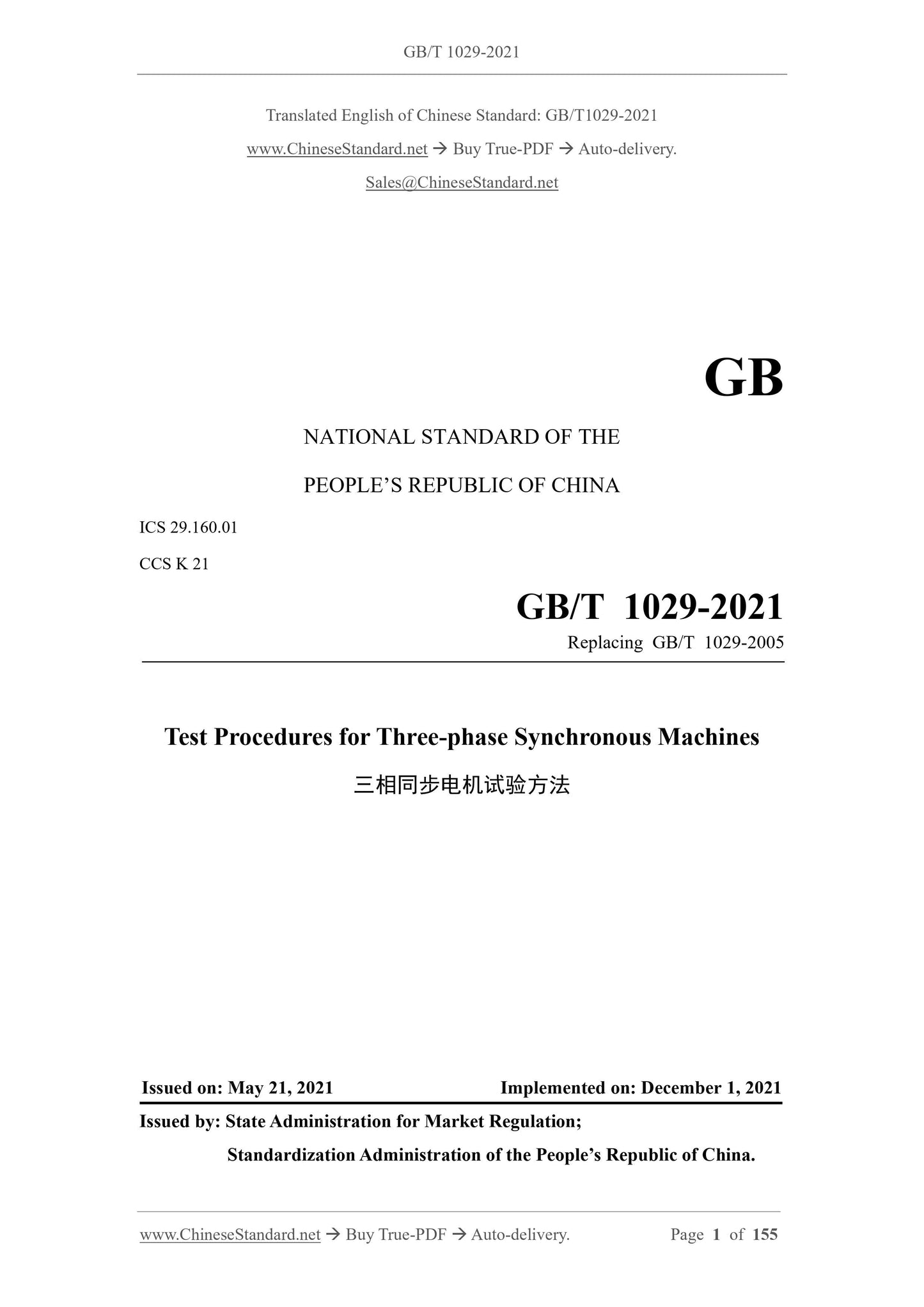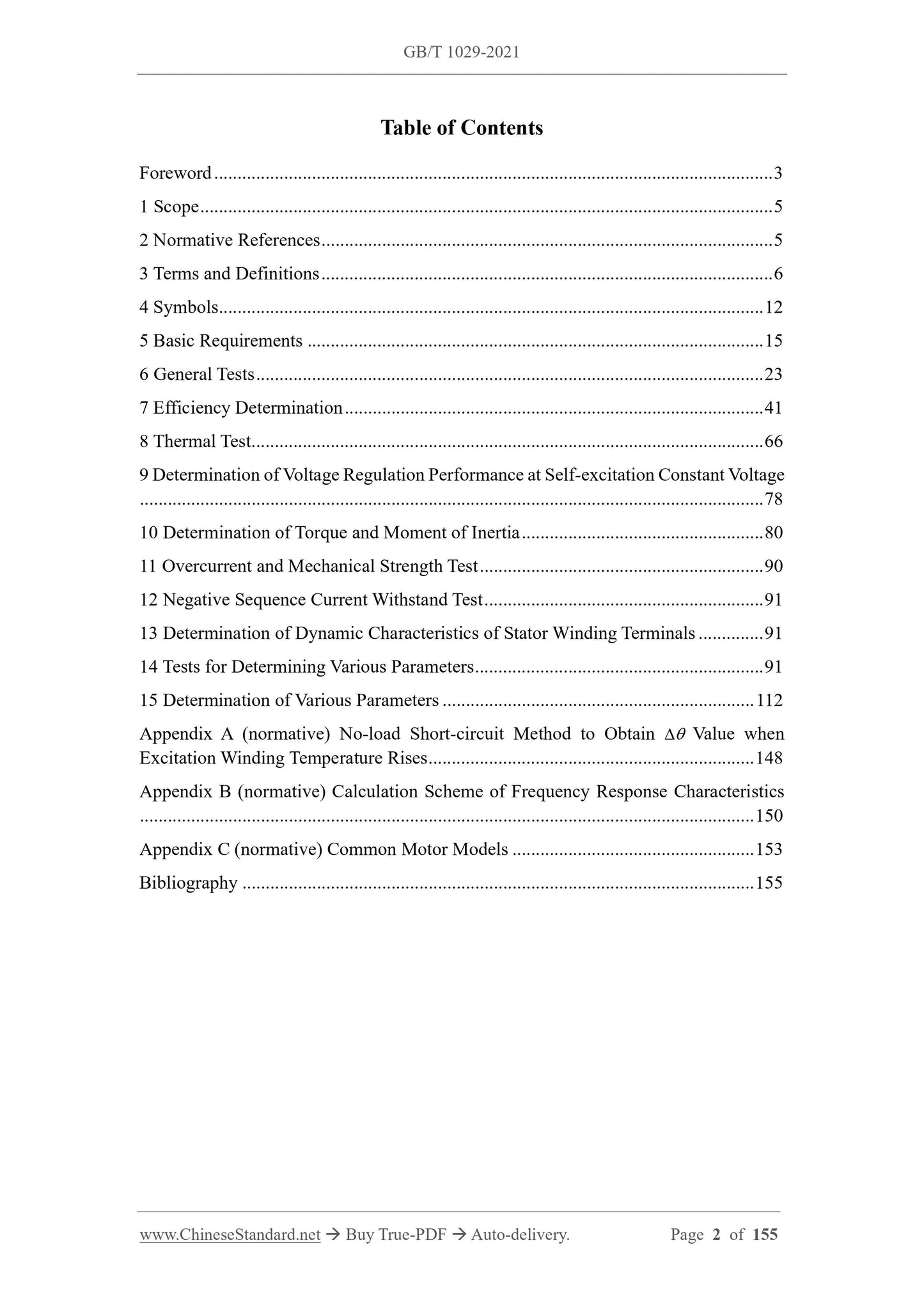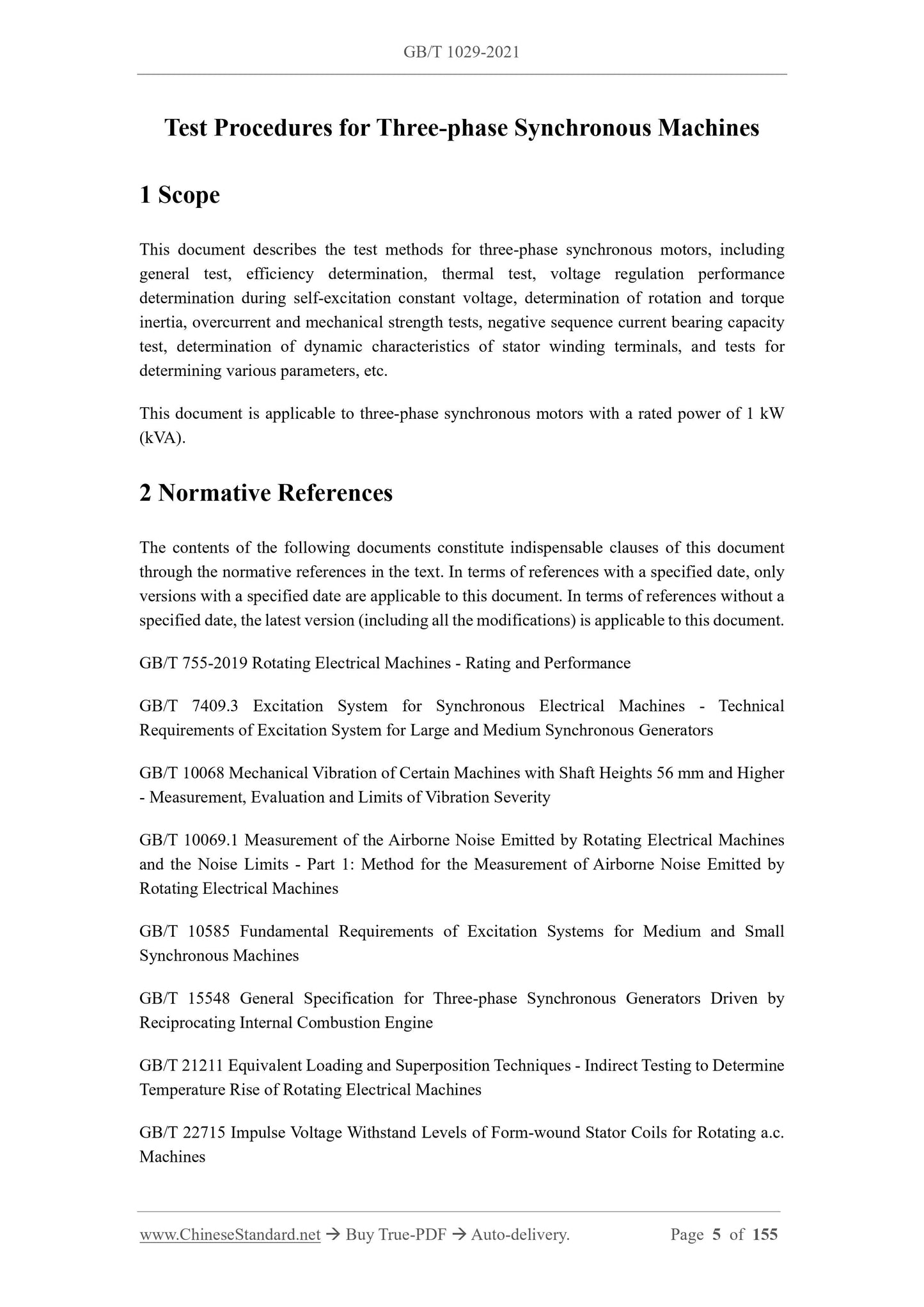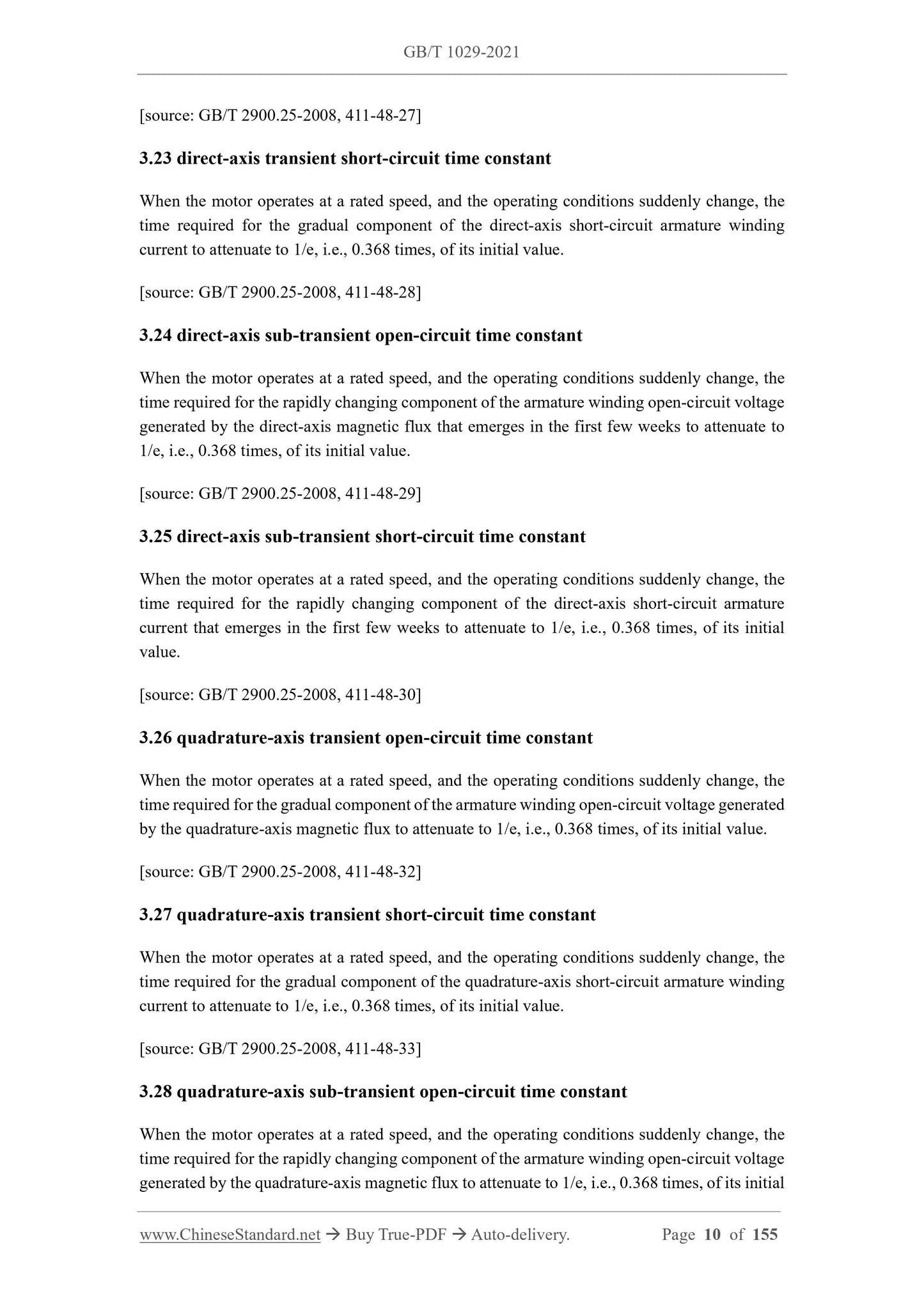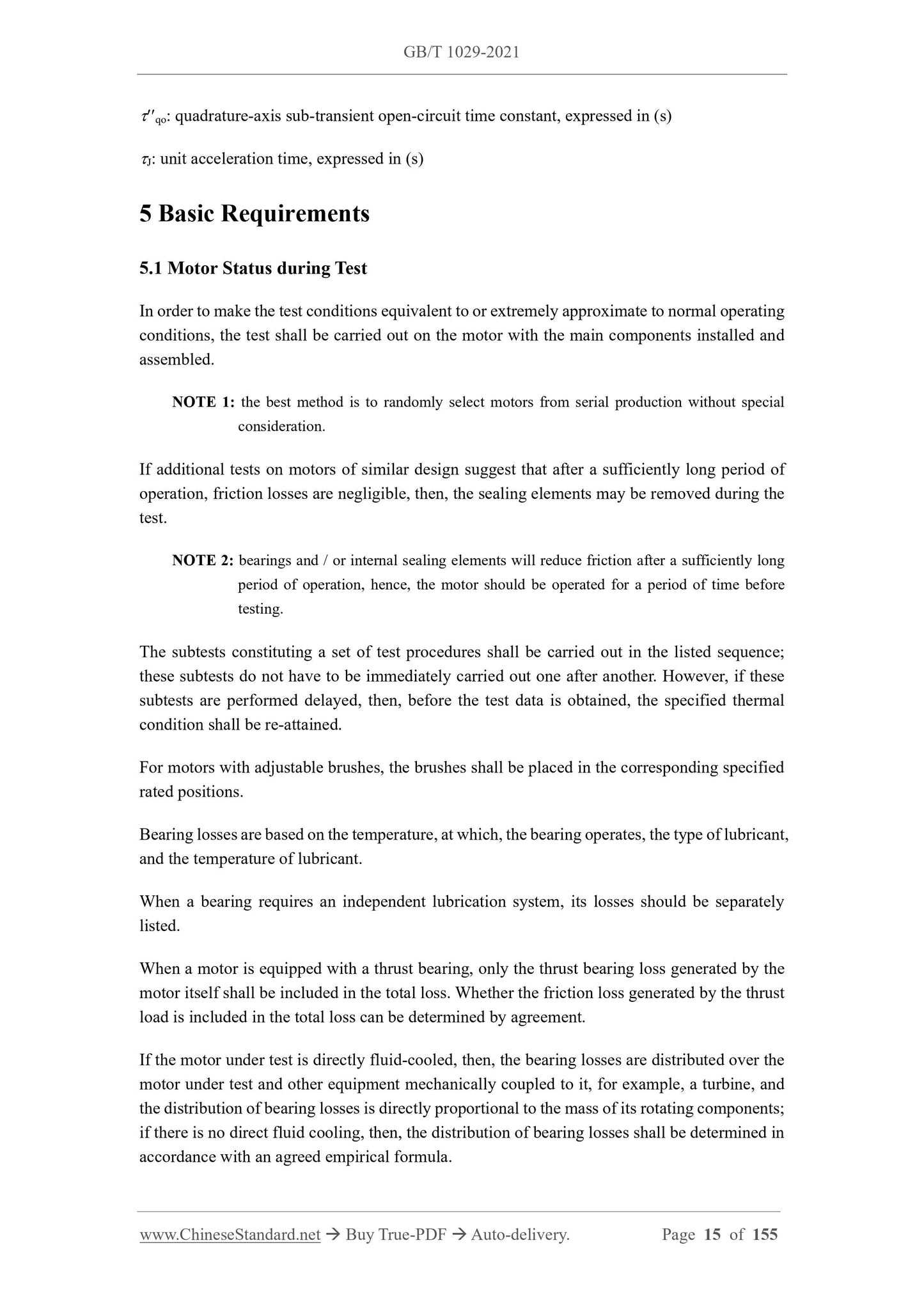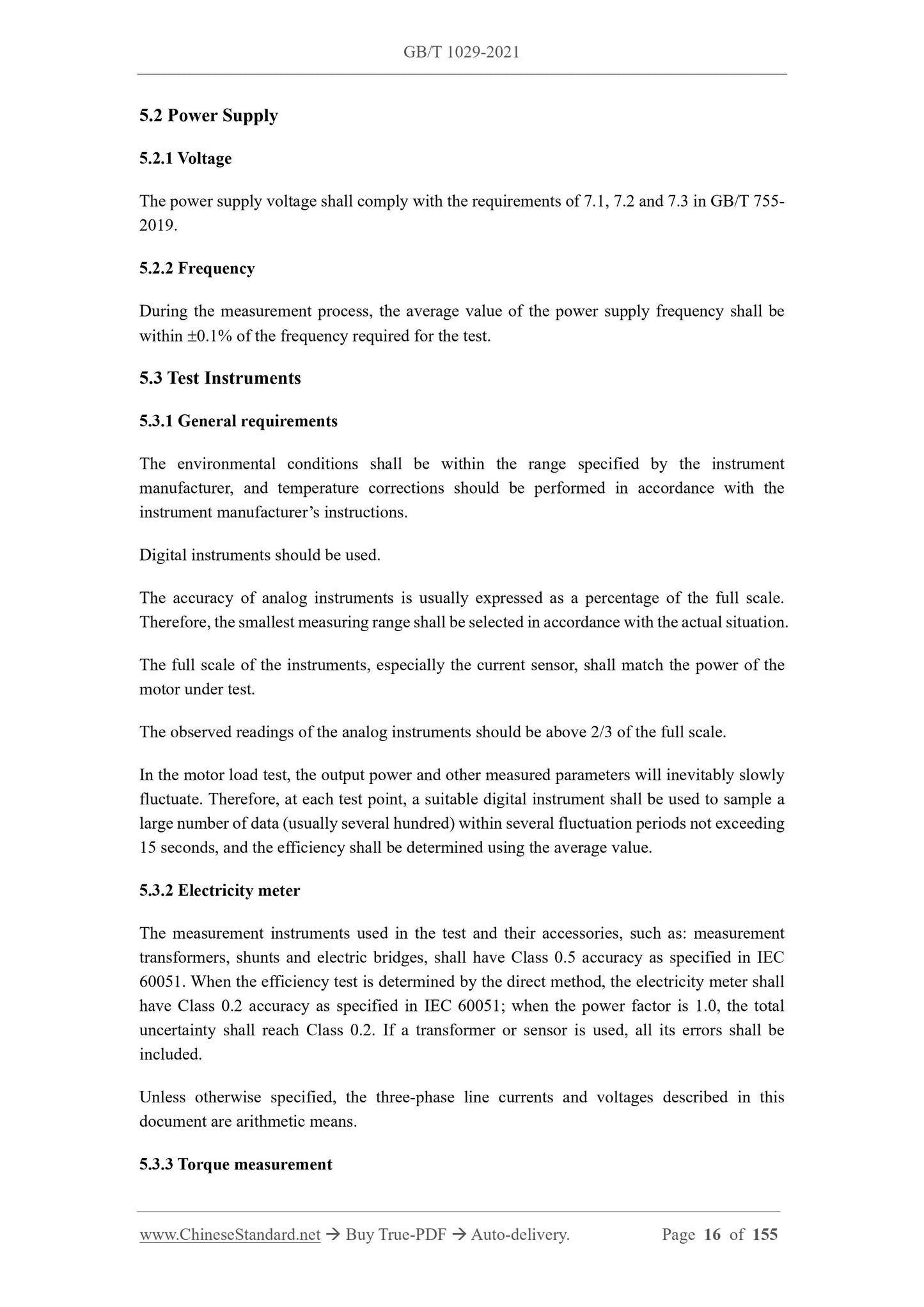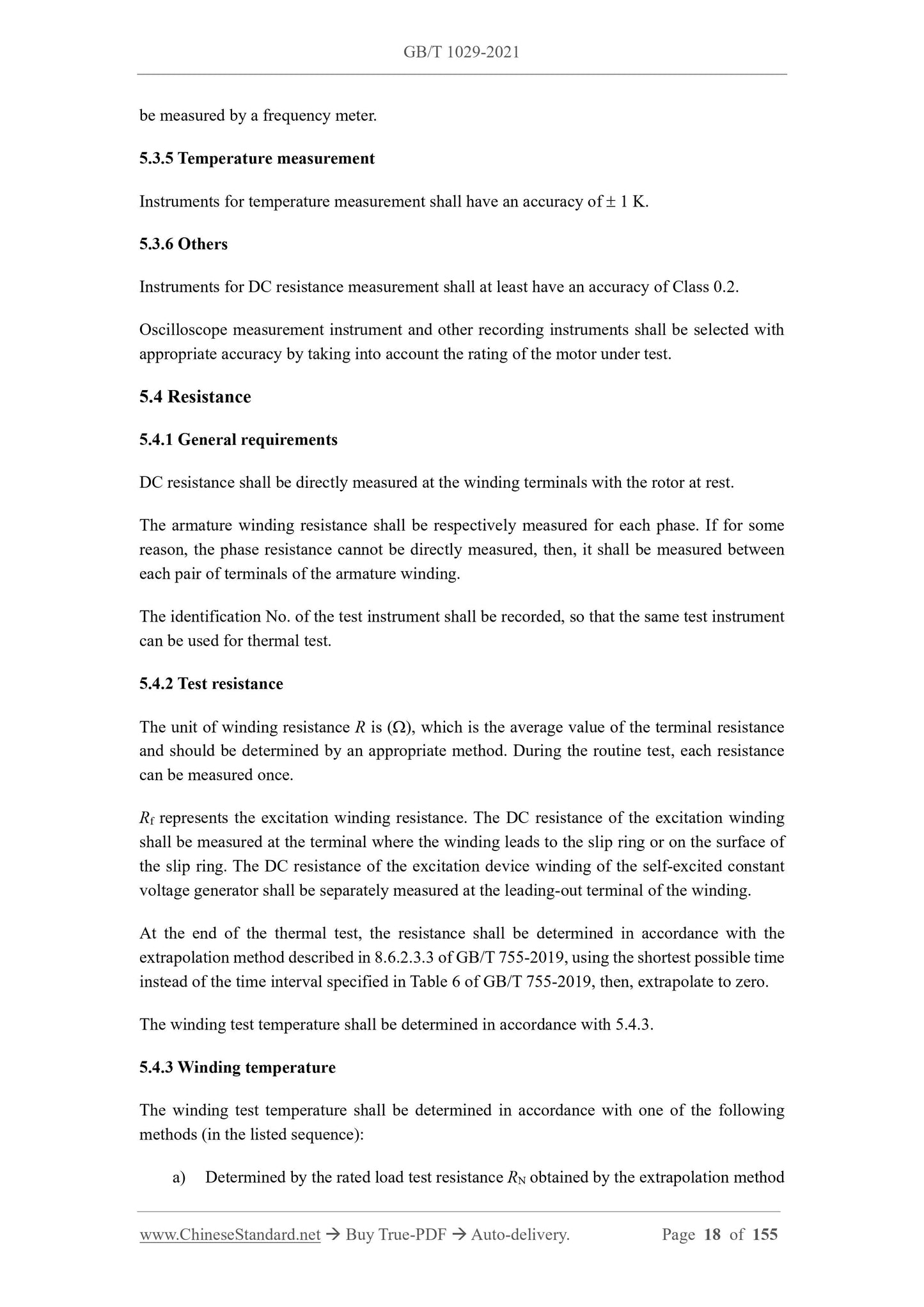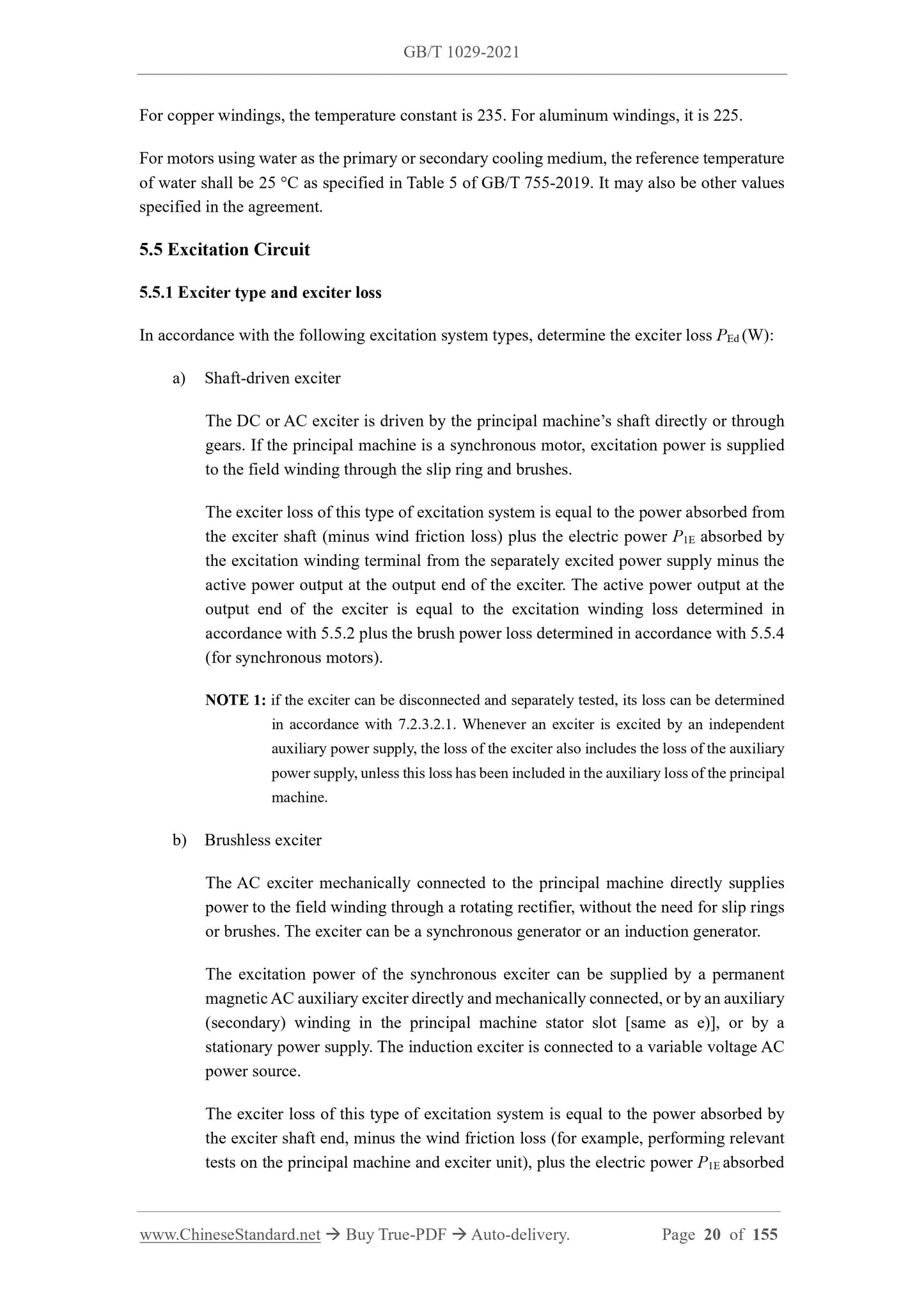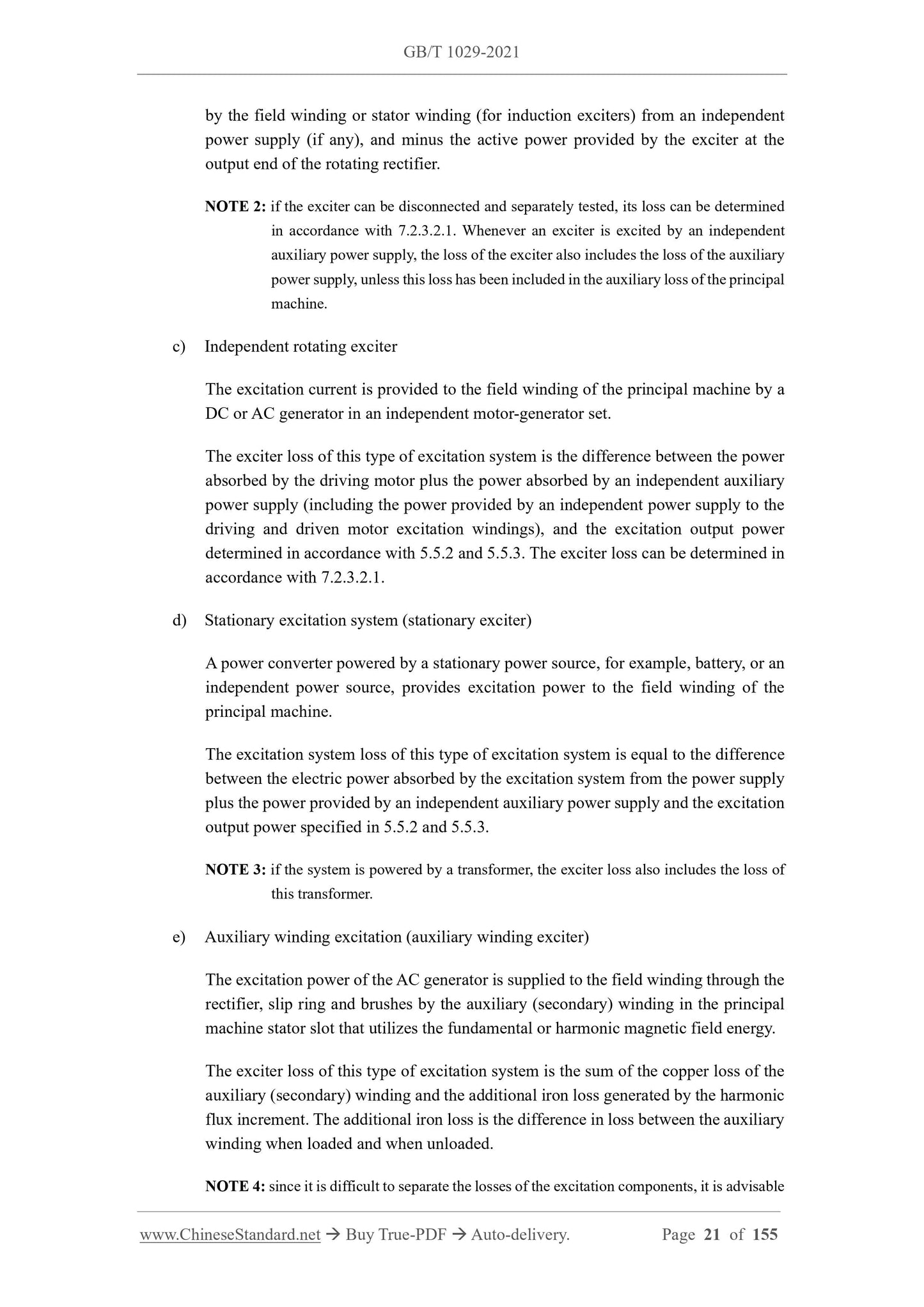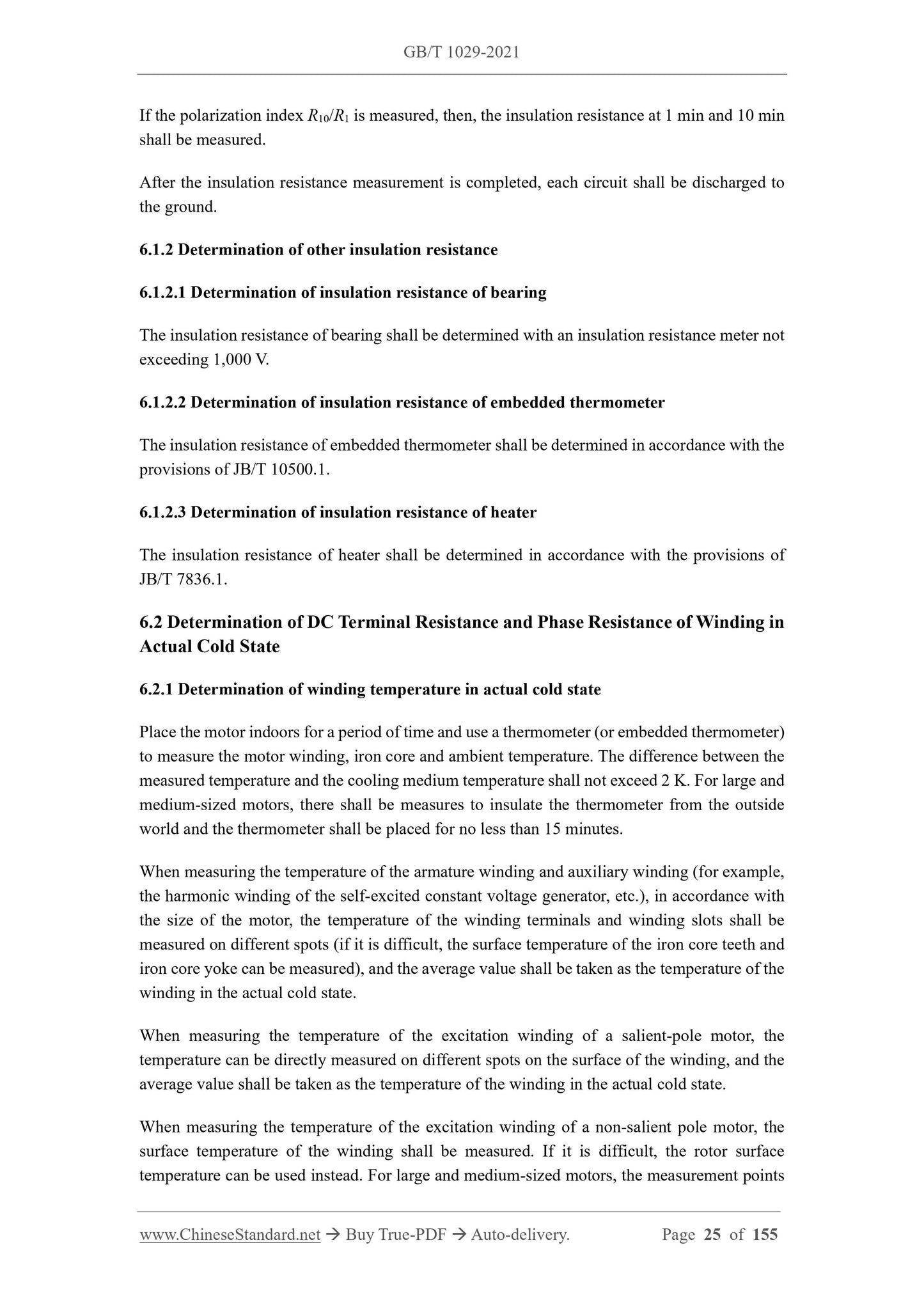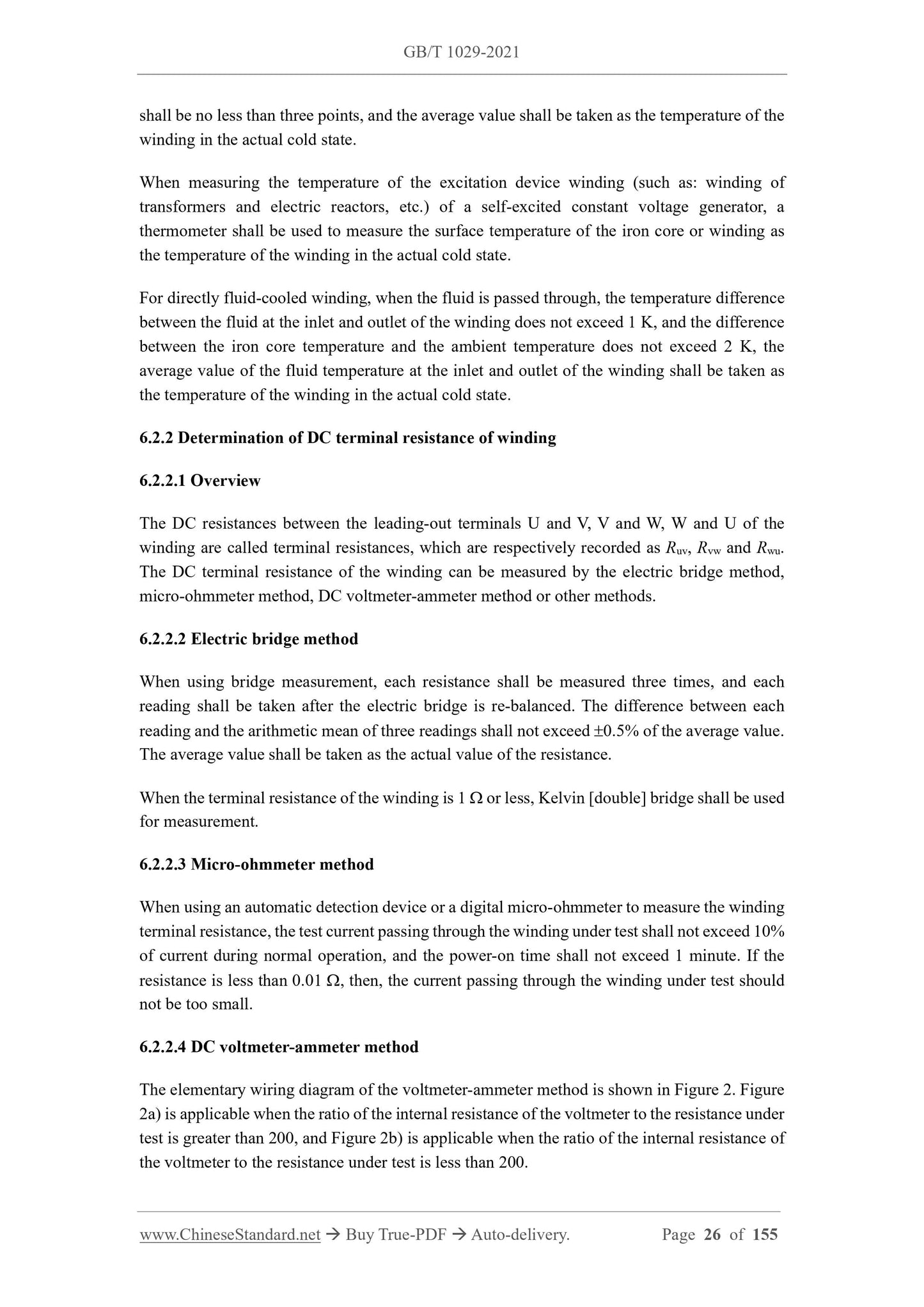1
/
of
12
www.ChineseStandard.us -- Field Test Asia Pte. Ltd.
GB/T 1029-2021 English PDF (GB/T1029-2021)
GB/T 1029-2021 English PDF (GB/T1029-2021)
Regular price
$1,305.00
Regular price
Sale price
$1,305.00
Unit price
/
per
Shipping calculated at checkout.
Couldn't load pickup availability
GB/T 1029-2021: Test procedures for three-phase synchronous machines
Delivery: 9 seconds. Download (and Email) true-PDF + Invoice.Get Quotation: Click GB/T 1029-2021 (Self-service in 1-minute)
Newer / historical versions: GB/T 1029-2021
Preview True-PDF
Scope
This document describes the test methods for three-phase synchronous motors, includinggeneral test, efficiency determination, thermal test, voltage regulation performance
determination during self-excitation constant voltage, determination of rotation and torque
inertia, overcurrent and mechanical strength tests, negative sequence current bearing capacity
test, determination of dynamic characteristics of stator winding terminals, and tests for
determining various parameters, etc.
This document is applicable to three-phase synchronous motors with a rated power of 1 kW
(kVA).
Basic Data
| Standard ID | GB/T 1029-2021 (GB/T1029-2021) |
| Description (Translated English) | Test procedures for three-phase synchronous machines |
| Sector / Industry | National Standard (Recommended) |
| Classification of Chinese Standard | K21 |
| Word Count Estimation | 102,124 |
| Issuing agency(ies) | State Administration for Market Regulation, China National Standardization Administration |
Share
